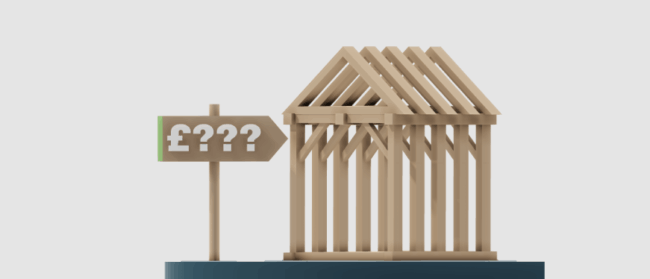
Wondering if timber frame houses are more expensive to insure? Learn what affects the cost, practical steps to keep premiums down, and how to find the right cover.
Will insurers cover it, and how could it affect your ability to get a policy?
This guide explains how insurers view wood rot, why it’s excluded from most policies, and what you can do to protect both your property and your insurance cover.
Wood rot occurs when timber becomes damp and is attacked by fungi. There are two main types:
Both types weaken the structure of a home if ignored, which is why insurers take them seriously.

Wet rot typically feels soft or spongy to the touch, with timber that looks darker than surrounding areas. The surface may appear cracked or flaky, and the rot remains localised to the damp area. It develops where wood moisture content is usually over 30%.
Dry rot can cause timber to shrink, crack into cuboid shapes, and crumble into a dry, brittle texture. A musty smell is common, and you may see grey or white fungal strands that spread across masonry or plaster. Dry rot can develop where moisture levels are lower, around 20% or above, making it harder to detect early.
Spotting these differences helps homeowners act quickly and arrange remedial work before the damage spreads.
In almost all cases, home insurance does not cover damage caused by wood rot. It is classed as a form of gradual deterioration and therefore treated as a maintenance issue, not an insurable event.
Most policies include a general exclusion along the lines of:
Any loss or damage caused by wear and tear, depreciation, the effects of light or the atmosphere, mould, dry or wet rot or fungus, and costs that arise from the normal use, maintenance and upkeep.
This means that if wood rot is the proximate cause of damage, for example, if a ceiling collapses because supporting timbers have rotted, a claim is likely to be rejected. Even where another event is involved, if rot contributed to the damage, insurers may still refuse to pay out.
Even if a policy excludes wood rot itself, its presence can still influence your insurance in other ways:
Being transparent when applying for cover is essential.
Spotting issues early helps keep repair costs manageable and avoids insurance complications. Look out for:
Regular checks of roof spaces, skirting boards, window frames and basements are worthwhile.
Since insurers view wood rot as a maintenance issue, prevention is the homeowner’s responsibility. Practical steps include:
A well-maintained home is less likely to suffer structural damage and less likely to cause problems with insurance.
Wood rot is generally excluded from home insurance policies. In fact, ongoing rot problems may suggest a property is not in a good state of repair, making it unacceptable to some insurers. For this reason, it is important to disclose any known issues when applying for cover.
That said, comprehensive protection is still possible. Specialist brokers can sometimes arrange insurance while remedial works are being carried out, taking into account the property’s individual circumstances.
At Intelligent Insurance, we specialise in helping homeowners with non-standard risks. Even if your property isn’t in perfect condition, we can work to secure the protection you need for peace of mind.
Yes, advanced rot can compromise the structure of a building. However, because it is seen as gradual deterioration, it is excluded from most policies.
Insurers do not usually price separately for dry and wet rot. The key factor is the overall condition of the property and whether remedial work has been carried out.
Yes, but it depends on the severity. You must disclose the problem to your insurer. Some providers may decline cover, but specialist brokers may still be able to arrange protection.

Wondering if timber frame houses are more expensive to insure? Learn what affects the cost, practical steps to keep premiums down, and how to find the right cover.